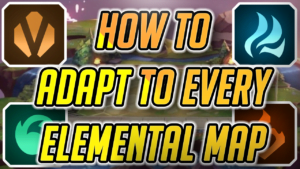Teamfight Tactics has 4 different maps. If you are ever wondering how to change your playstyle for each map, this is the video for you. I see it too many times–people play the same way no matter what the map is and no matter where the hexes are. Failing to adapt to each map including hex placements can make your plays suboptimal, leading to loss in LP, it’s like driving the same way everywhere in the world. You wouldn’t drive the same way in New York City as you would in Wyoming.
Prefer to listen? Check out the video below instead!
How the Maps Work
TFT has a map representing a different element–Cloud, Mountain, Inferno, and Ocean. Each element gives an elemental hex with a unique bonus based on the map. Keep in mind, the Elemental hexes occupy an item slot, so they are mainly for your secondary carry or support in the late game. The champion Qiyana also changes with the element of the map, making her fit in different compositions every game. I am going to go over what compositions are favored in each map along with different micro strategies you can try to use to gain an edge in your next game. If you’d like to learn how to play each map step by step, head on over to my live stream at www.twitch.tv/bunnymuffinslol to see actual gameplay and employment of each of the following strategies. I am live from 3pm to 7pm US eastern time Friday Saturday and Sunday.
Mountain
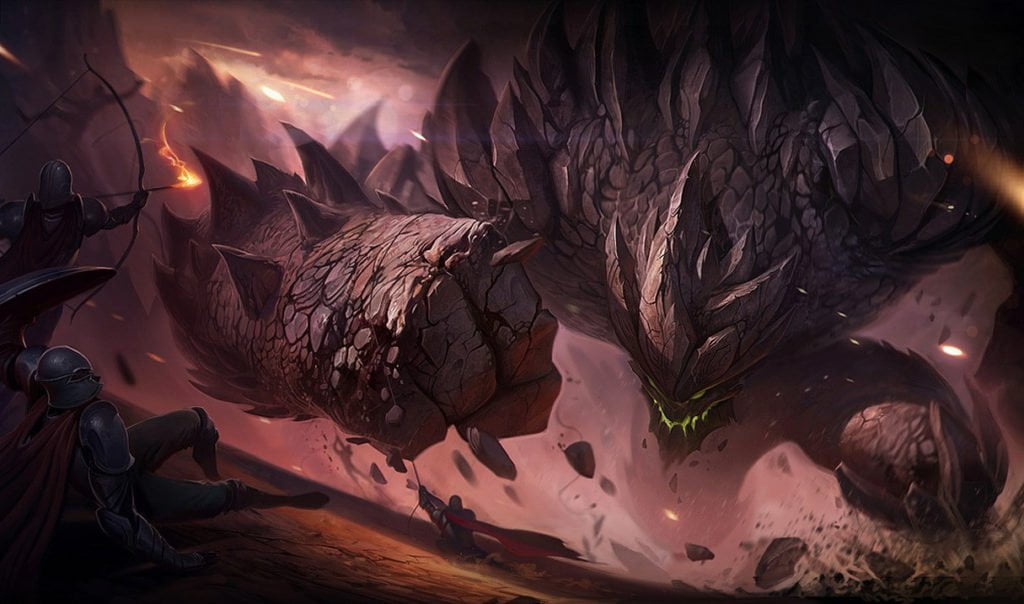
First we have the Mountain map, which gives 30 permanent health every round to your champion. This tile is the weakest in the game, but gives a permanent bonus. In the beginning of the game, you can gain a slight edge by finding units you will play in your final composition by placing them on the square. That means, it would be wise not to put Druids on those squares (if you have a better late game unit), since you will likely sell them at the end of the early game. If you do not find those units, think of units you will play in the early game, and place those units on the Mountain tiles during the Neutral rounds. In the mid-game, place your late game squishy carry units on these squares such as Azir or Sivir in order to give them more survivability in the late game. Lower health units benefit more from the Mountain buff than tanks because it is a higher percentage increase in their health total.
The Mountain map makes Qiyana have the Mountain element, so be sure to take advantage of that. Normally, Mountain synergy is very difficult to find, as only Malphite and Taliyah have that synergy. Since Malphite is a 4 cost minion, he is often difficult to find. Also, Mountain is an early game synergy since it only buffs one unit. One unit buffs are typically better in the early game since there are fewer units on both teams. Therefore, once you find Malphite, you typically do not want to be running Taliyah, a 1 cost unit, because she will be too weak for that stage in the game. This makes Mountain buff very weak, but with the addition of Qiyana, a 3 cost unit, everything changes. Qiyana herself is a strong unit, and now that we can get her as early as Level 3, we can easily pair her with Taliyah for an insane early game advantage. The Mountain buff gives a 1500 shield to a random unit, and most early game units have less than 1000 health, making it a huge value element. As you transition to the late game, pairing Qiyana with Malphite will still work since both of them are viable late game units.
Lastly, percent health items gain a slight edge, so their value goes up a little higher. Items such as Red Buff, Morellonomicon, and Giant Slayer all deal more damage on the Mountain map due to the health buff.
Cloud
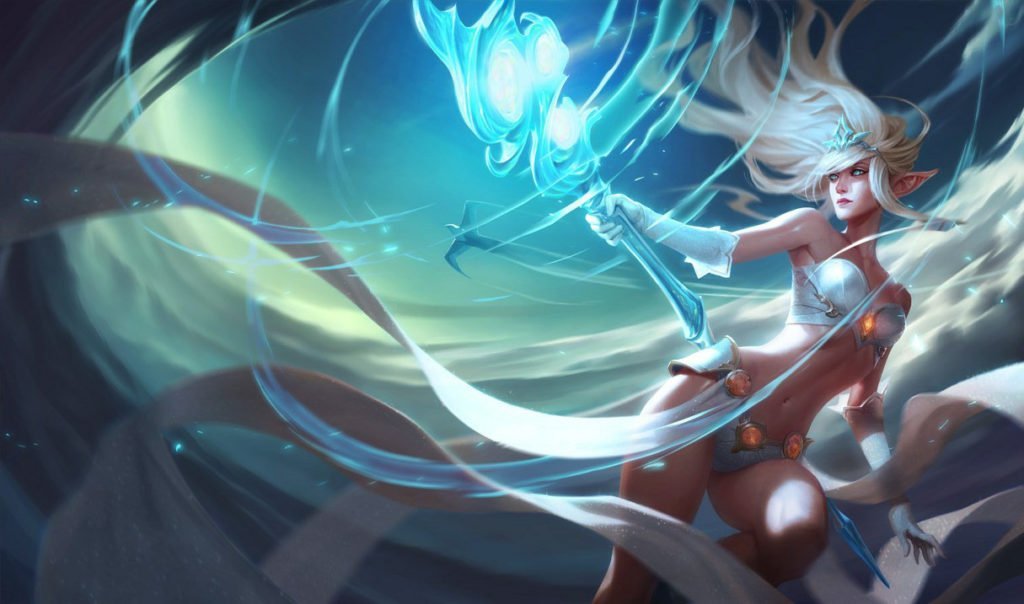
The Cloud map gives dodge chance to the unit on the hex for the entire round. The units you will want on these squares are your tank units in the front line or your primary carry if it is in the back line. This can be great against Assassins and other physical damage units.
Similar to the Mountain map, there are only 2 Cloud units–Janna and Yasuo. The same tactic from before can be used by utilizing Qiyana to have quicker access to Cloud synergy before Janna becomes available. While I am not saying to go Cloud on this map, it makes compositions revolving around Janna or Yasuo to be slightly more attractive.
While most compositions are strong on this map, I would avoid Blademasters, as their primary damage is from on-hit abilities. With added dodge to the game, it makes them all slightly weaker. I’ve seen some front line tanks survive against full item Blademasters, giving his team time to kill them all and win the round. With this in mind, Wardens become very powerful on the Cloud map. Their increased armor combined with the dodge mechanic makes them INCREDIBLY tanky against physical damage teams. I would definitely go for Wardens since they can become unkillable with dodge and require 1 less item. Lastly, spell based compositions or AOE based compositions perform well on the Cloud map because dodge does not affect them. Having a carry such as Brand or Lux can provide huge value because of this.
As for items, dodge items have slightly less value because dodge stacking does not mathematically combine well in Teamfight Tactics. I will release a guide later on how all stats/items stack. Also, Riot removed the mechanic of “attacks cannot be dodged” which used to exist in Wild synergy and the item Rapidfirecannon. Until Riot brings these back, no items will have a distinct advantage in TFT on the Cloud map.
Inferno
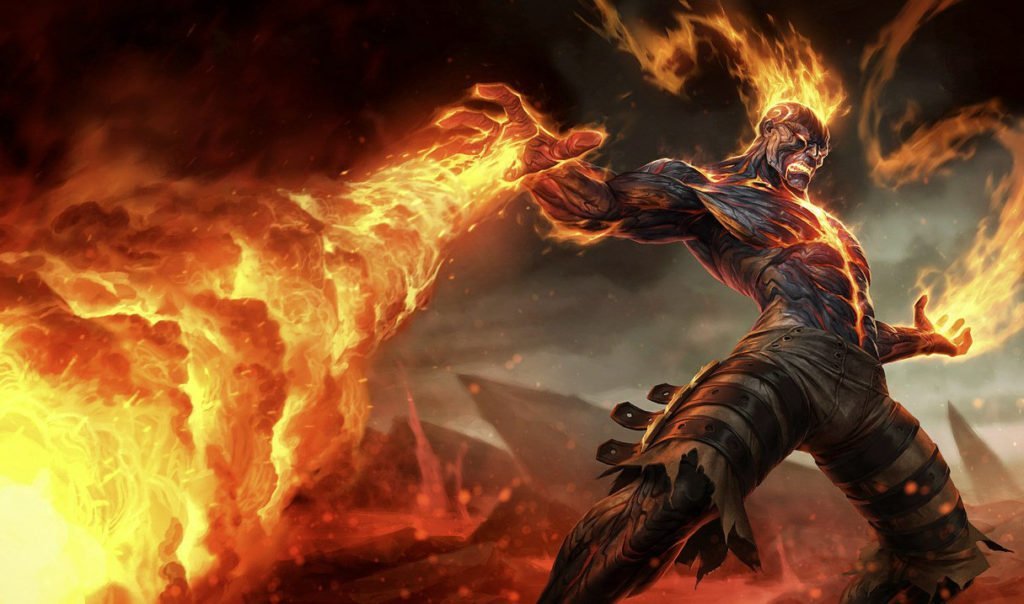
The Inferno tile gives attack speed to a unit for the duration of the round. This highly amplifies attack speed oriented compositions, such as Blademasters and Assassins. This is fantastic in the backline for the champions like Ashe, Kindred, Azir, Twitch, Sivir, and Nocturne. Spellcasters can also benefit from the Inferno square due to increased mana gain due to increased attack speed. On frontline squares, champions that are both tanky and attack speed reliant such as Olaf or Master Yi can be a great user of this square. One tip you can use is to place a support unit next to your vulnerable front line carry using the Inferno square such as Karma, Taric, or Janna in order to help your unit survive on the front line.
In terms of Qiyana, it is easier to get Inferno synergy. However, since the synergy is already so easy to acquire, I would not go out of my way to utilize her unless it was logical to try an Inferno composition for that game. Instead, I would go for Blademasters, Assassins, Rangers, or Beserkers. Lastly, Azir benefits the most from this square, as he increases both his own and his soldier’s attacks from utilizing the Inferno square. Azir on the Inferno tile combined with the Blademaster item can yield wild results!
For items, you will want to raise the priority of on-hit items, such as Hush, Spear of Shojin, Giant Slayer, and Statikk Shiv. For defense, Frozen Heart gains a ton of value because it now reduces more attack speed. You can even consider stacking Frozen Hearts to increase the radius of the effect. While Zephyr is always a good item for any elemental map, it especially shines in Inferno because it slows down the enemy’s source of damage for just a few more seconds, which can make all the difference!
Ocean
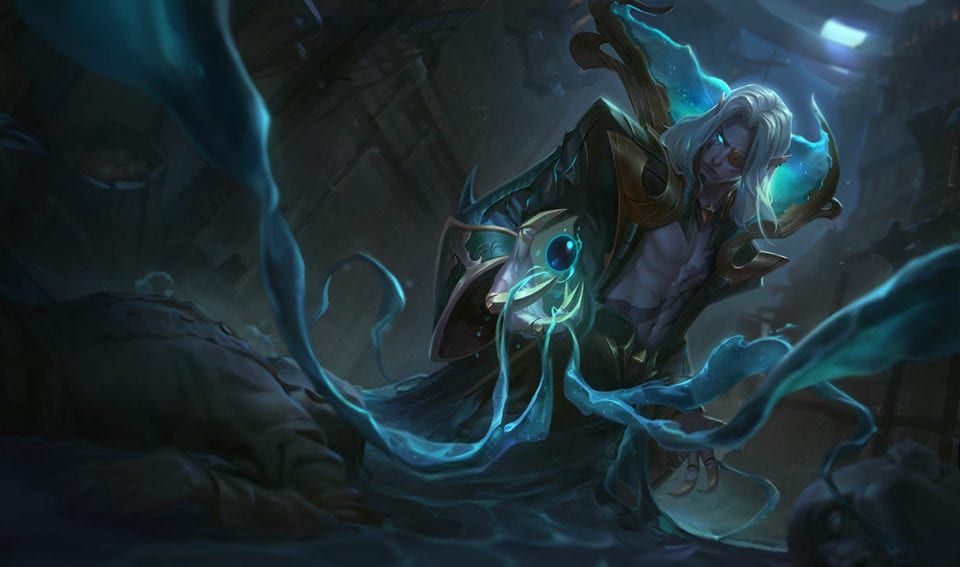
Lastly, we have the Ocean map, which gives flat mana to the user of the hex. Ocean is quite similar to Inferno, as they both give damage or ability boosts. Ocean is fantastic with champions that need to get their critical spell off before they die, so it works well with both tanks and carries.
Units that are strong with Ocean are units who utilize mana items appropriately. Some examples include Veigar, Brand, Amumu, Lux, Zed, Taric, and Nami. All of these champions have high impact ultimates, and can quickly take over games if they cast them just a tiny bit earlier.
For Qiyana, her use is quite similar to Inferno maps. There are already so many Oceans to choose from, so Qiyana is not a critical component of Ocean compositions, but she is still useful as a strong standalone unit. Instead, I would focus on Mage and Summoner compositions. Having a Zed get his first ultimate off faster means his clones will have higher health, which will increase the chance of his clone getting another clone. Mages make a lot of sense because they can get their double cast earlier, which means that a fight can be over right as the round begins. I love having a Veigar 3 start the game with full mana utilizing 2 tears + the Ocean tile to instantly wipe out two enemy units!
For items, Spear of Shojin and Seraph’s Embrace gain a ton of value because both of their effects are only active after the first spell cast. Stacking a Zyra with an Ocean tile and Spear of Shojin can greatly accelerate her plants into snowballing a fight. Less frequently used items such as Ionic Spark and Luden’s Echo gain value as well, both due to the fact that spells are casted faster. Lastly, Dragonclaw is a great item on this map since many users opt for spell based compositions, so don’t underestimate Dragonclaw on this map.
Thank You
These are my best tips for adapting your playstyle to every map. If you have any advice or tips you’d like to share with the community or even with me, leave me a message in the comment section below. If you guys enjoy this type of content and want to see more content around TFT play or helping players climb in lower elo, don’t be afraid to follow me on my other platforms such as Youtube, Twitch, Twitter, and Instagram which can be found on this site.
If you are wondering what are some strong compositions are, check out my meta reports!

